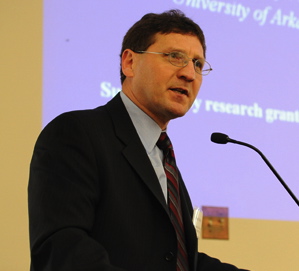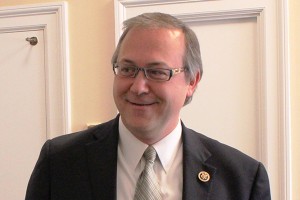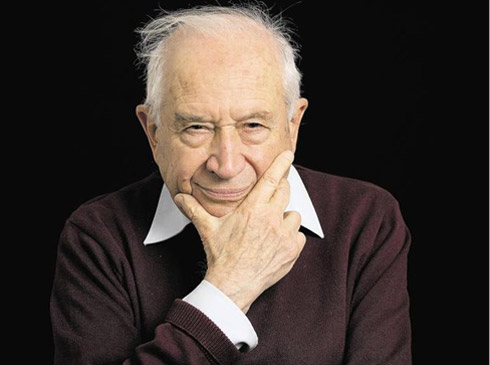By Fred Gardner O’Shaughnessy’s News Service
Thanks to Benson Hausman, MD, for reminding me in October 2023 that this piece, first published in December 2016, is more timely than ever.
“Legal or Illegal, Cannabis Is Still Addictive,” is the pugnacious title of a paper published in Volume 1, Number 1 of Cannabis and Cannabinoid Research, an online journal edited by Danielle Piomelli. a professor in the Pharmacology Department at UC Irvine School of Medicine.
The journal is much needed and we wish Piomelli success with the venture. I hope he doesn’t take the feedback that follows personally. It’s strictly political —and it applies, on some level, to every cannabinoid researcher in Academia.
Piomelli has made a Faustian bargain with the neo-prohibitionists at NIDA. When you run a lab, as he does at UCI, you need funding.
The Devil’s offer is: “You can publish studies showing benefit, but you have to keep up the pretense of harm.”
Since 2005, when UCLA pulmonologist Donald Tashkin showed that marijuana smoking does not cause lung cancer, the Drug Warriors have strained to keep the American people scared of the herb. Two million have used it with MD approval and there has been no negative impact on public health. How can Piomelli uphold his end of the deal?
The “Still Addictive” article featured in Cannabis and Cannabinoid Research was transcribed from a discussion Piomelli conducted with Margaret Haney, PhD, Professor of Neurobiology (in Psychiatry) at Columbia University Medical Center; Alan J. Budney, PhD who directs ADHERE (Addiction and Health Research) at Dartmouth; and Pier Vincenzo Piazza, MD, PhD, who is with INSERM, the French equivalent of the US National Institute on Mental Health.
An odd introductory paragraph defines the plant itself as a “Cannabis-derived drug” and bemoans the widespread belief in its relative benignity:
“Clinical and experimental work spanning the last two decades has demonstrated that Cannabis-derived drugs such as Cannabis can cause addiction. Yet, this evidence has yet to permeate the scientific community and the public. We have asked three leaders in the field to discuss this.”
Extensive excerpts follow —sophistry requires verbiage. O’Shaughnessy’s retrograde messages are in bold italics.
Piazza kicks things off with a true sentence: “Addiction is a vague concept.”
Haney makes the obvious point that “Cannabis Use Disorder (CUD) does not result in the same extreme levels of behavior that one sees with addiction to other drugs of abuse.”
Piomelli asks why the Diagnostic and Statistical Manual of the American Psychiatric Association “prefers to use the term ‘substance-related disorder’ over ‘addiction.’”
Budney, who was on the committee that drafted the language used in DSM-V, explains: “the term ‘addiction’ is commonly used to refer to only the severe range of substance use disorders.”
• Calling it “Cannabis Use Disorder” is a soft sell. What matters –the crucial thing from the Addiction Specialists’ perspective– is that CUD now has a listing in the DSM. Their reimbursable catchment area has been vastly expanded.
Budney continues: “The change to ‘use disorder’ reflects multiple considerations but is meant to indicate that a person can have a problem with substances that does not necessarily coincide with the extreme image that many lay people and scientists envision when they think ‘addiction,’ which is wildly uncontrolled, compulsive behavior…
“A person can have problems with substances that are very substantial all along a continuum, and neither clinicians nor scientists have highly effective ways to distinguish among those severity levels, and designate a cutoff for addiction that is clearly discriminated from less severe forms of the disorder. The range of symptoms and consequences we observe in clinical settings is quite large…
“The DSM 5th edition provides a method for designating severity level by summing the number of diagnostic criteria displayed; however, no matter what the severity level, the person still receives a diagnosis of a use disorder—mild, moderate, or severe.”
Piazza adds: “Probably one of the most interesting points of the DSM 5th edition has been to officially recognize what Dr. Budney was saying: there is a continuum in the severity of the disorders related to drug use, although scientists, clinicians, and the general public conceptualize addiction as the last, more severe stage. This implies that also mild use disorders need a therapeutic intervention and can give serious problems to the individual without the need to reach the extreme state.”
• It would make sense to nip the problem in the bud (accidental pun) if grave danger loomed, but as Haney has already pointed out, “Cannabis Use Disorder… does not result in the same extreme levels of behavior” associated with alcohol, tobacco, meth, and opioid disorders.
“The features of CUD,” Budney goes on, “are the same as the features of all substance use disorders according to the DSM 5th edition. There is a list of 11 criteria, and they encompass the range of signs and symptoms that can be experienced… Essentially, CUD manifests in the same way as other substance use disorders but the difference may be in the magnitude of severity of each of the signs and symptoms that are experienced… Heavy cannabis users who stop experience withdrawal symptoms that may be somewhat similar to tobacco withdrawal symptoms, but they typically do not approach the severity nor have the clinical implications of the withdrawal experience by many opiate users.”
• Did you ever hear anyone who tried to kick the cigarette habit say their craving “may be somewhat similiar” to the craving for cannabis? Many people say that cigarettes are harder to kick than heroin.
Piomelli asks the specialists to “choose one piece of evidence” showing that Cannabis is addictive.
Haney says, “We can demonstrate that daily smokers go through a time-dependent and pharmacologically specific withdrawal when they abstain from Cannabis. If you replace Cannabis use with low amounts of tetrahydrocannabinol (THC), you can reverse this withdrawal phenomenon.
• Haney is a big fan of Nabilone, a synthetic THC analog developed by Eli Lilly in the 1970s.
“I think another really important feature,” she goes on, “is the clinical data showing how high relapse rates are with Cannabis. Although Cannabis may have lower abuse liability than other drugs like cocaine or nicotine, once somebody has developed a dependence on the drug, then quitting becomes extremely difficult. So again, the relapse rates for Cannabis are as high as other drugs of abuse. I think it is important for other scientists and for the public to be aware that it might not be as easy to develop dependence, but once you have it, then quitting will become extremely difficult.”
• This is pure sophistry. People continue to use cannabis not because quitting is extremely difficult but because they don’t consider their use problematic. They don’t think of using again as “relapse.”
Budney piles on the gibberish: “I would second that. If I had to pick out the ‘smoking gun’ to convince the public and the scientific world that CUD is real, then it would be the data from clinical epidemiological research. Certainly, the evidence from behavioral pharmacology, clinical pharmacology, and the neuroscience research is important and robust. However, if you look at prevalence rates in the general population who report substantial problems with different types of substances and the rates of substance users that enroll in treatment, and relapse rates following quit attempts, the data on CUDs are remarkably similar to the other substance use disorders.
“So, as Dr. Haney just pointed out, I do not think there is any argument to counter the fact that, for a substantial number of people, Cannabis use causes similar and substantial problems that are comparable to other types of drugs that we all agree have addictive potential.”
Piazza says, “I would use the same smoking gun as Dr. Budney but with a small statistical precision that is provided by patient’s demand… The negative perception of the patient of her or his condition, reflected by the demand to be treated, I think, is a very important demonstration of the serious behavioral problems associated with CUD.”
Haney acknowledges that, “A subset of treatment seekers in the United States are mandated to treatment. Yet the important thing to highlight, as Dr. Piazza mentioned, is the number of Cannabis users seeking treatment on their own initiative. These are adults seeking treatment on their own initiative.”
• Haney does not state the alleged number or cite a source, and we can only wonder how many of these adults entered treatment not by mandate of the court but to save their jobs after failing a pee test.
Piomelli asks, “Why is it that, for so long, the scientific community failed to recognize the addictive properties of Cannabis?”
Haney’s answer is inane: “I think one of the factors is that, because THC is lipophilic, and so long-lasting, withdrawal takes quite a while to manifest. In humans it usually takes about 24 hours, which is unlike cigarettes, where if an individual is dependent on nicotine, he or she cannot go a couple of hours without experiencing withdrawal. A heavy Cannabis user, by contrast, has to go quite a while before experiencing withdrawal, and so it was not quite as obvious to people that withdrawal existed.”
• There is a false implication that the craving for Cannabis, though it takes longer to onset than the craving for a cigarette, is otherwise equivalent. Haney simply ignores the tremendous difference in intensity.
Budney points out that “For a long time, scientists had great difficulty showing in animal experiments that animals would self-administer Cannabis or THC-type compounds… Scientists did finally solve these issues and now have clearly demonstrated Cannabis self-administration and withdrawal in the animal lab.”
Piazza plays the CBD card, and inadvertently exposes a major Prohibitionist falsehood: “I think there could be also, paradoxically, a generational problem… When you look at the Cannabis of the 1970s, which is basically what scientists were smoking when they were young, there was almost a 50/50 percentage between THC and cannabidiol. What we know now is that, since cannabidiol is an antagonist of THC, the greater the ratio between THC and cannabidiol the greater the risk for Cannabis to be addictive.”
• Piomelli does not ask, “How could they become scientists if they were smoking Cannabis when they were young? Weren’t their developing brains damaged? Didn’t they suffer cognitive impairment?”
• Of all the sophistries employed by the neoprohibitionists, the central one is bracketing marijuana with physically addictive drugs —opioids, speed, alcohol— as giving rise to “Use Disorders” that require treatment. It’s like saying a hurricane and a drizzle both involve rainfall, so everyone should evacuate their homes when it starts to rain.
Thus Allen Budney focuses attention on “the probability of acquiring a problem.. how likely or probable one is to develop a problem if he or she tries it… how hard is it to quit if you develop a problem… Many factors other than just the pharmacology of the substance and how it is administered contribute to how ‘addictive’ or how likely it is that a person will develop a problem, which I think is what we are really interested in. And in my opinion those factors cannot be divorced from the questions about addictive potential.”
Haney agrees: “The relative abuse liability of different drugs is partly assessed by looking at the epidemiological data: if you try a drug once, how likely are you to go on and develop a use disorder?… My opinion is that Cannabis has a lower abuse liability than something like cocaine.
• Going way out on a limb, aren’t we, Meg?
“Nonetheless, because of the more permissive societal attitude toward Cannabis, a larger number of people are using this drug than before, and so more people will develop a problem with it. Thus, even if Cannabis has a lower abuse liability, the sheer number of people using it will result in a large number of people with a use disorder.”
• Haney’s elitist POV inverts the political reality. It was the larger number of people using Cannabis (in defiance of the law) who forced the more ‘permissive societal attitude,’ not vice versa!
Piazza has the data: “The abuse liability for Cannabis, in the sense of the probability that you have to develop CUD if you smoke once, is between 10% and 15%, depending on the survey you look at. In comparison, cocaine, alcohol, and heroin are in a range that is between 20% and 25%. Nicotine has the highest abuse liability with a probability of 33% to induce dependence.
“However, I believe that abuse liability should also be measured by a second factor that is how easy it is to quit if you have developed a substance use disorder. My understanding, and probably Dr. Alan Budney can say more, is that stopping Cannabis use, if you have developed CUD, is not easier than other drugs.
“Another element to be taken into account is that prevalence of Cannabis use is very, very high. Consequently, although a lower percentage of individuals using Cannabis will develop a substance use disorder, compared with individuals using other drugs, CUD is going to be the major drug-related problem in the next decade.”
• Perhaps someone in the audience made a derisive comment, because Budney felt impelled to really pour on the gibberish:
“I would like to emphasize a point so that our audience does not think we are going way overboard and engaging in reefer madness related to the severity of Cannabis addiction. All factors held constant, the pharmacology of opiates would probably produce a more severe addiction [Thanks, Al] that would be more entrenched and harder to quit related to the opiates impact on the brain systems, euphoric experience, and the development of tolerance and withdrawal.
With that said, it is impossible in our society to make all things equal. There are clear pharmacological differences in what happens in the brain and the body that contribute to what we are calling addiction. However, these cannot be readily separated in our society. Access, dose, route of administration, societal acceptance, perceived risk, cost, societal consequences for use or intoxication, and multiple other factors contribute to the real-world question of how addictive a drug is compared to another.”
Haney again invokes the “permissive attitude,” which undermines the Cannabis user’s will to lay off the stuff: “Let me add that although it is correct that our numbers with relapse are very high, we have to be aware that this could also reflect the permissive attitude toward Cannabis. My impression is that patients coming in for treatment have not reached the point that many cocaine users and opiate users do, where they have to stop because they have hit the proverbial rock bottom. Cannabis users are a bit more ambivalent about quitting so that could feed into the high relapse rates.
Piomelli directs the conversation towards methods of treatment. Haney says, “As Cannabis researchers and clinicians, we want to have a range of options available for people seeking treatment. Some patients are going to prefer a behavioral, psychological treatment approach. I strongly believe we also have to provide patients with the option of a pharmacological treatment approach and let the patients choose what works for them.”
Budney: we should not neglect the need for early interventions or preventative interventions that educate and motivate individuals to watch out and perhaps make changes to their Cannabis use patterns before problems develop or move from mild to moderate or severe level. So, I guess you might label that a treatment option, but perhaps more accurately, a preventative option should also be on the table.
Piomelli stays on point: “What options are available to treat Cannabis addiction right now? If I were to show up at your hospital… and say, ‘I have got a problem with Cannabis,’ what could you do for me?
Haney replies, “My colleagues would enroll you in a clinical trial where we would both administer behavioral treatments and test a potential medication. There is no FDA-approved medication at this moment. At Columbia University what we are doing is clinical trials, testing things that have looked promising in the laboratory and moving them into the clinic.”
Budney’s response is pure jargon: “We would provide the same types of treatment that Dr. Haney just mentioned. The behavioral treatment options are pretty much the same as those used with any other substance use disorder. There are cognitive behavioral therapies that have been well specified. There are motivational interventions that are well specified. There are incentive-based or contingency management-based interventions that are well specified, with different intensity levels depending on the magnitude or the severity of the problem.
• Translation: we have carrots and we have sticks.
“Again the option of combining these behavioral treatments with medications is always an important consideration. Currently, some providers use medications that are not FDA approved specifically for CUDs, and much of this practice is to target symptoms such as nausea, depressed mood, insomnia, or appetite loss, which are common symptoms experienced during the early withdrawal phase immediately after cessation. However, that is an individualized practice, and certainly not a standard part of therapies for CUD.”
• Translation: Prozac, Xanax, etc.
Piazza’s answer was laughable. To give a perspective from the other side of the ocean… One important point that has been unanimously underlined by behavioral therapists, at a convention on CUDs organized by the Swedish minister of health, is that patients with CUD are particularly difficult to treat. They usually forget the previous session of therapy, and so each day you start all over again, and they suffer from a profound lack of motivation that makes them quite difficult to engage in the therapeutic process. This is due to the pharmacological effects of THC that impair memory and motivation. So I think that, like for the other drugs and in general for behavioral diseases, it is really important to develop a pharmacological treatment of CUD.”
•. Does Dr. Piazza really think that every heavy cannabis user is like Bill Murray in Groundhog’s Day? Does he think amotivational syndrome is so strong that it keeps people from quitting?
Haney plugs Nabilone: “In our laboratory model of CUD, we have found that the long-acting cannabinoid agonist, nabilone, has shown promise. Better than all the medications we have tested, nabilone has both reduced Cannabis withdrawal symptoms and reduced relapse as measured in the laboratory. However, these laboratory findings need to be confirmed in a clinical trial… It is much better than dronabinol.”
Piomelli asks, “Do you think that we should stop looking for treatments, pharmacological treatments for Cannabis abuse?”
Budney pats himself on the back: “I’m afraid we are all quite biased in regard to this question, given that much of our life’s work is devoted to trying to develop more effective ways to help people with problems to stop using or reduce their substance use… Coming up with pharmacological and behavioral combinations is essential.”
Dr. Haney responds: “I will commit hara-kiri if we stop.”
• An obvious cry for help.
Piazza pontificates: “Scientific know-ledge on the cannabinoid system and on the CB1 receptor, the principal target of THC, has progressed very much during the last 20 years… The scientific community should now start looking for a treatment of CUD. I do not think scientists have done very much to find treatments. Myself, I have started doing it, but I think that other people should get into the game.
• Game? What game?
“I really believe that if we put some serious effort into the research, then we will be able to develop a true treatment for CUD. Substitution treatments like nabilone could be useful but are far from ideal. Having an analog of THC constantly on board can be associated with serious health problems such as cardiovascular risk, cognitive impairments, and an increased risk of fibrosis.”
• Spoken like a true prohibitionist!
Piomelli says: “We are out of time. This was a wonderful conversation.”
• O’Shaughnessy’s says: Sorry to ask you to read through so much sophistry and blither, but how else to expose the phoniness of Cannabis Use Disorder?
Because the journal is peer-reviewed, the material therein can be cited as evidence of The Truth. The CUD discussion ends:
“Cite this article as: Piomelli D, Haney M, Budney AJ, Piazza PV (2016) Roundtable discussion: legal or illegal, Cannabis is still addictive, Cannabis and Cannabinoid Research 1.1, 47–53, DOI: 10.1089/can.2015.29004.rtd.”
Academics can now give their own blither an aura of validity by citing this article.
.
Budney’s bio: http://geiselmed.dartmouth.edu/adhere/staff/directors/






